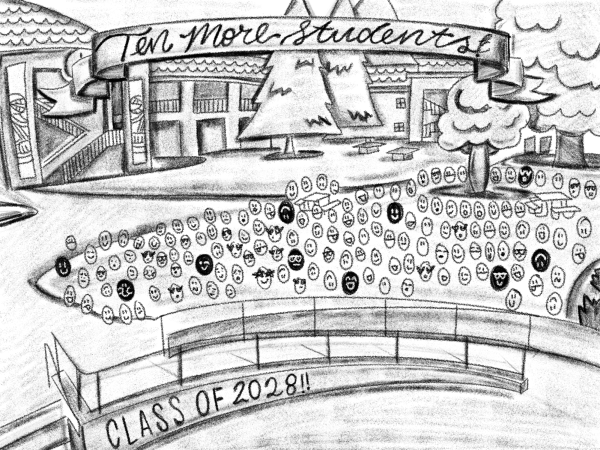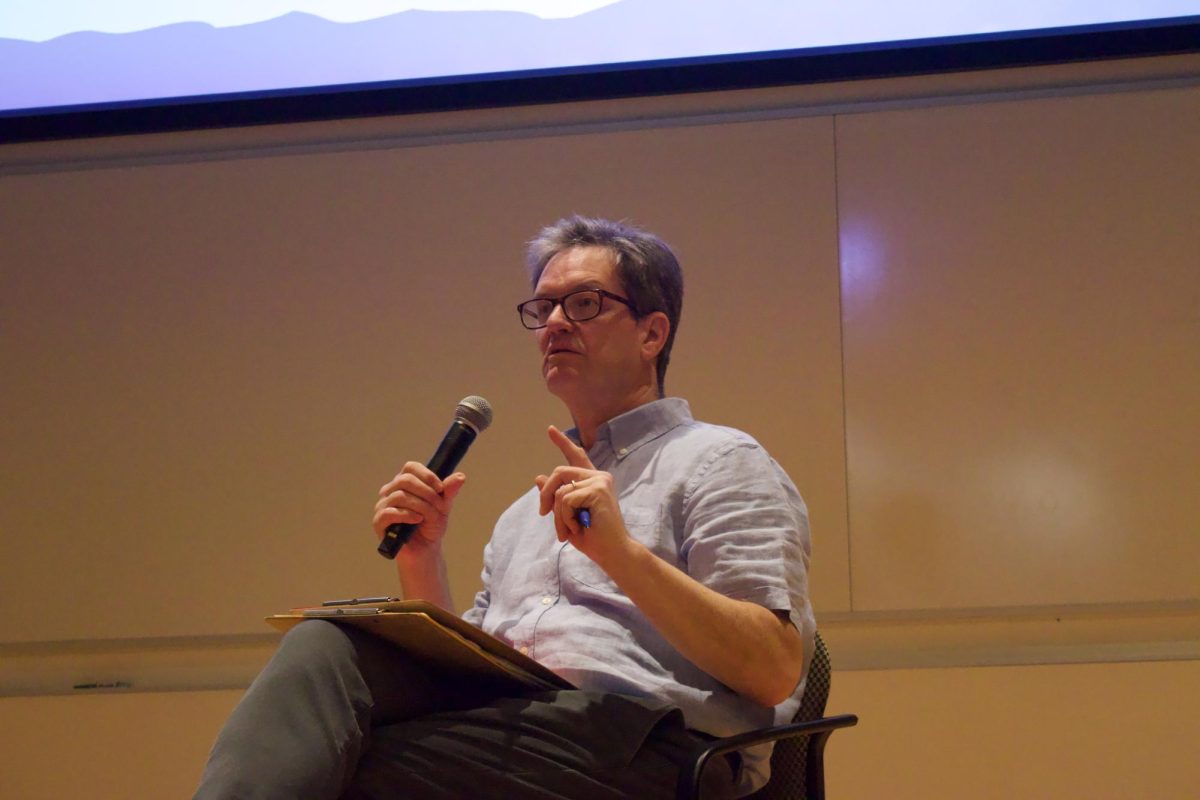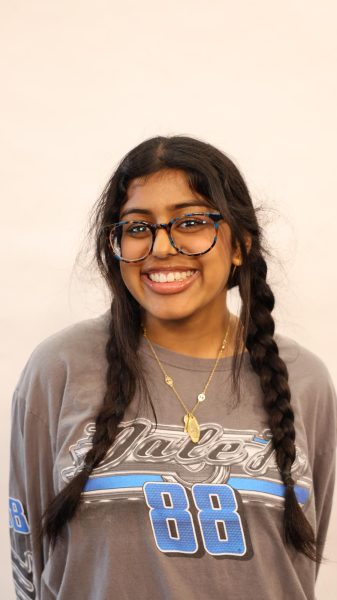After many years of maintaining a consistent class size of around 150 students, Menlo has decided to increase future Upper School class sizes by 10 students each. The class of 2028 is the first class in which this change has been implemented.
There have been times in the past where admission has surpassed 150 students per class. Specifically, after the pandemic, Menlo over-accepted incoming students. Consequently, more students were accepted into the class of 2025 than there was space for. “We had to go to the town [of Atherton] and let them know that we were over-enrolled, because we have a cap on the number of students that we’re allowed to have,” Head of School Than Healy said.

This enrollment cap is due to the traffic concerns around campus, a fact that the town of Atherton reiterated to Healy. To accommodate the additional students for that year, Menlo created incentives for students to carpool or take the bus to school, and traffic numbers remained stable.
For the following classes of 2026 and 2027, the student population returned below 150. However, after seeing that Menlo had the ability to accommodate more students on campus without impacting traffic, Healy said he felt that each grade would benefit from having more students. According to him, the opportunities Menlo offers are so expansive and some classes varied with the student numbers, so space could be made for more students. Additionally, he felt that serving more students more fully meets Menlo’s mission as a school of educating students. Having more space factored into their consideration in executing this change. Consequently, Healy began talking with Upper School Director John Schafer and other school leaders about expanding enrollment. Schafer’s support prompted Healy to go to the city of Atherton to inquire about the matter. “[We] proposed that we increase the school’s enrollment by 5 percent over four years.” Healy said. That meant that 10 students would be added to each incoming grade.
Healy believes that the impacts of this increase will be profound for the kids whom the school otherwise would not have space for. However, in terms of the programmatic impact of this increase, he said he doesn’t see this as extremely impactful to Menlo’s educational system or social environment — but he does believe that it will help regulate classroom numbers. “I do think it might fill in some of the classes that were a little light,” Healy said.
Specifically, Healy said that Menlo’s bigger problem is needing more students to make a club, sport or class come to life. Another positive side effect for this decision was that it would help fill our classes that were under-enrolled, especially elective ones. “[Students have] probably been in classes that have been smaller than 16, maybe much, much smaller than 16, and so we’ve got empty seats [to fill],” Healy said. Thus, by increasing future class sizes, there is a greater possibility for a more “robust enrollment” in areas the school needs.
In an email to the Coat of Arms, Chief Financial Officer Shelly Gutpa explained that the increase in enrollment will generate added money for Menlo, though minimal. Gupta said that the school will re-spend the added money into fortifying “high-quality educational programs,” as well as managing facilities in order to enhance the learning experience of all students. Because a larger student body means more teachers will need to be hired and paid, “the modest increase in enrollment will generate similarly modest additional operating income for Menlo School,” Gupta wrote.









